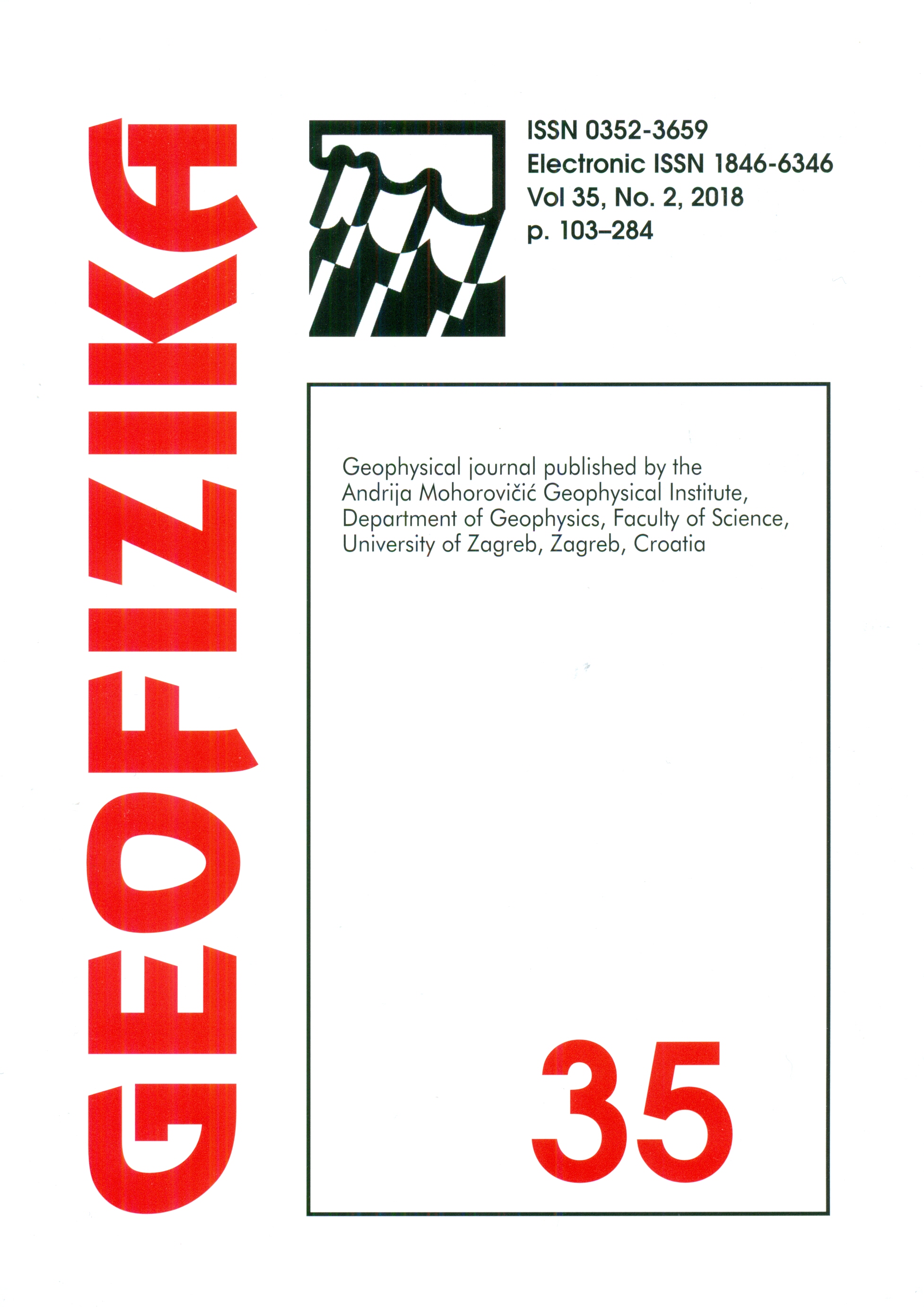Tropical cyclone intensity prediction over the North Indian Ocean - An NWP based objective approach
DOI:
https://doi.org/10.15233/gfz.2018.35.8Keywords:
Numerical Weather Prediction (NWP), North Indian Ocean (NIO), intensity, mean sea level pressure, pressure defect, average absolute error, standard deviationAbstract
A Numerical Weather Prediction (NWP) based objective intensity prediction approach has been explored for prediction of tropical cyclone intensity over the North Indian Ocean (NIO) using ECMWF model outputs. The intensity of a tropical cyclone is classified by the maximum sustained wind (10-min mean) according to World Meteorological Organization (WMO). An empirical relationship between the difference of the model's maximum mean sea level pressure (MSLP) inside a 6° × 6° grid box around the centre of the system and the lowest mean sea level pressure at the centre of the system (ΔP) with the observed intensity is developed using over 100 analyses during 2010-2012. The same is used to predict intensity of very severe cyclonic storm Hudhud and a Deep Depression observed over the Bay of Bengal during 2014. The results show that the empirical equation is skillful in prediction of intensity as compared to predictions computed using the relationship Vmax = K√ΔP with different constant values of K. The error analyses show that the relative error in intensity prediction using the empirical equation derived in the present study is 34% less than the same using K = 14.2 kt/√hPa in Vmax = K√ΔP with an improvement which is significant at the level of 0.95.
Downloads
Published
Issue
Section
License
Copyright (c) 2021 Geofizika journal

This work is licensed under a Creative Commons Attribution-NonCommercial 4.0 International License.

